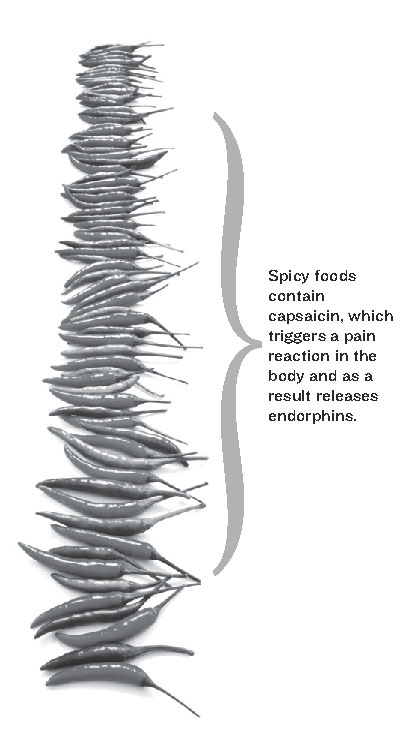Written by Ericka Foster
They’re your immediate reward for exercise, but what more is there to these mysterious hormones?
The word endorphin is a combination of the words endogenous and morphine. It is a fancy way of saying mood-boosting pain relievers released by the body. Humans have at least 20 types of endorphins that are released into the spinal cord by the pituitary gland and hypothalamus—two structures in the brain that help regulate the body’s chemical and hormonal functions.
 Although they were once meant for the strenuous task of slaying wild animals and bringing them back to the cave, in modern times, endorphins are released during exercise, pain, consumption of spicy food and sexual intercourse. Other triggers include laughter, alternative therapies like acupuncture and tai chi, and even moderate alcohol consumption.
Although they were once meant for the strenuous task of slaying wild animals and bringing them back to the cave, in modern times, endorphins are released during exercise, pain, consumption of spicy food and sexual intercourse. Other triggers include laughter, alternative therapies like acupuncture and tai chi, and even moderate alcohol consumption.
Endorphins serve a variety of purposes in today’s world. For example, they help women’s bodies adjust to the myriad of changes that take place during pregnancy, and then help to alleviate the pain after she gives birth. The famous “runner’s high” creates a pleasurable effect, allowing us to challenge our bodies and meet our fullest physical potential.
The proven existence of the runner’s high has led mental health practitioners to recommend exercise in conjunction with psychotherapy and medication as a treatment for anxiety and mood disorders. “We’re built to exercise and have bursts of activity,” explains Dr. Craig H. Kinsley, professor of psychology at the University of Richmond.
The Centers for Disease Control and Prevention’s 2008 Physical Activity Guidelines for Americans recommend that adults between the ages of 18 and 64 get at least 2.5 hours of moderate-intensity aerobic activity every week and muscle-strengthening activities on two or more days a week. That exercise can be broken up throughout the day—even 10 minutes at a time can make a difference in mood.
